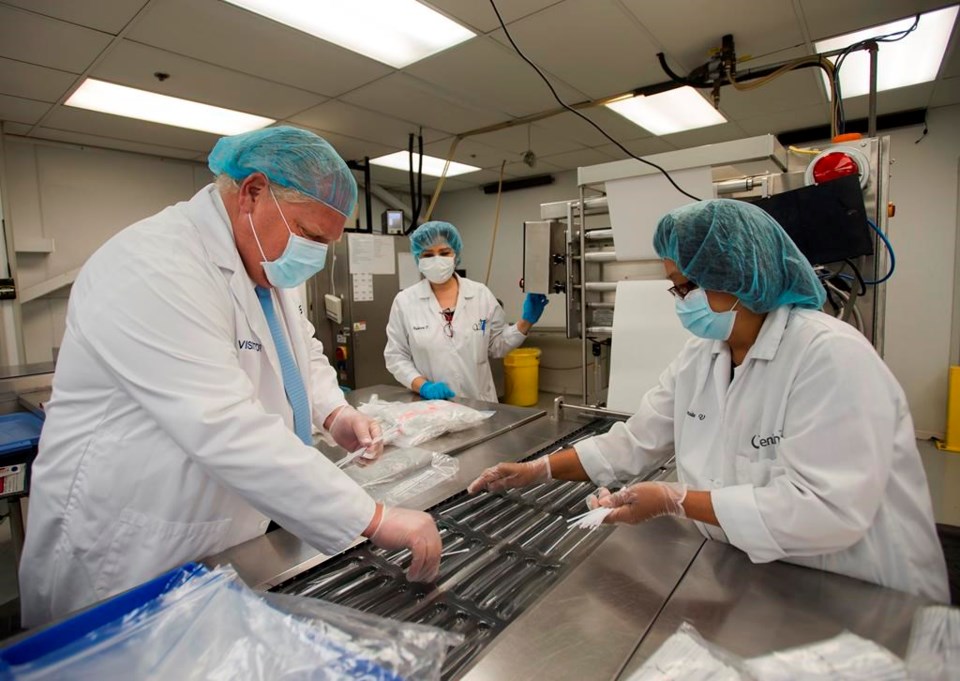TORONTO — Most regions of Ontario outside of the Greater Toronto and Hamilton Area will be allowed to see more businesses and activities open on Friday, including restaurant patios, hair salons and swimming pools.
The province is taking a regional approach to the second stage of its economic reopening, leaving current restrictions in place for places such as the Toronto area, which has a high concentration of the province's COVID-19 cases.
But provincewide on Friday — including the GTHA — the maximum size of social gatherings will be increased from five to 10, though the government says people must still stay two metres away from anyone outside their own household.
As well, across Ontario on Friday, all places of worship can reopen as long as attendance is limited to 30 per cent of the building's capacity and physical distancing measures are in place.
For most areas not in the GTHA and not experiencing COVID-19 outbreaks among migrant workers, Friday will see tattoo parlours, barber shops, hair salons and beauty salons allowed to reopen with health and safety measures in place.
Restaurants and bars in the regions able to move to stage two will be allowed to open patios and other outdoor dining.
The province also announced Monday it will let licensed establishments set up a new patio or expand an existing one without requiring an application or fee.
Tours will be allowed to resume, such as biking, walking, bus and boat tours, along with tastings and tours at wineries, breweries and distilleries.
Some outdoor activities can reopen, such as recreational facilities and training for outdoor team sports, camping at private campgrounds, beach access and additional camping at Ontario Parks, splash pads and wading pools, and all swimming pools.
Regions not yet able to enter stage two include those in and around Toronto, where two-thirds of the province's COVID-19 cases are concentrated, including Peel, Durham, Halton and York regions, as well as Hamilton.
Elsewhere, regions with outbreaks of COVID-19 among migrant workers won't yet enter stage two, including Haldimand-Norfolk, Niagara and Windsor-Essex. Lambton, which borders areas of the United States with high amounts of COVID-19 cases, will also not yet be allowed to move to stage two.
A spokeswoman for Health Minister Christine Elliott said officials are keeping a close eye on essential travellers in border regions such as Windsor-Essex and Lambton, due to their potential impact on new cases.
The government is promising to update the public at the beginning of each week on its assessment of whether those regions would be ready to move to stage two by the end of that week.
Premier Doug Ford has said that child care will be part of stage two, and the government says more details are coming on the phased reopening of licensed centres soon.
Ontario reported 243 new COVID-19 cases Monday, and 24 more deaths. That brings the province to a total of 30,860 cases — an increase of 0.8 per cent over the previous day, which is the lowest growth rate since early March.
The total includes 2,450 deaths and 24,492 cases that have been resolved — 240 more than the previous day.
Ontario also reported another drop in the number of people in hospital — from 635 to 603 — a trend over the past several days. One week ago there were about 800 people in hospital with COVID-19 and at the end of last month it was around 900.
The number of people on ventilators also dropped from 92 to 81, though the number of people in intensive care rose slightly.
The province reported completing 15,357 tests in the previous day — well short of its goal of doing 20,000 per day, though weekends often see fewer tests.
This report by The Canadian Press was first published June 8, 2020.
Allison Jones, The Canadian Press




